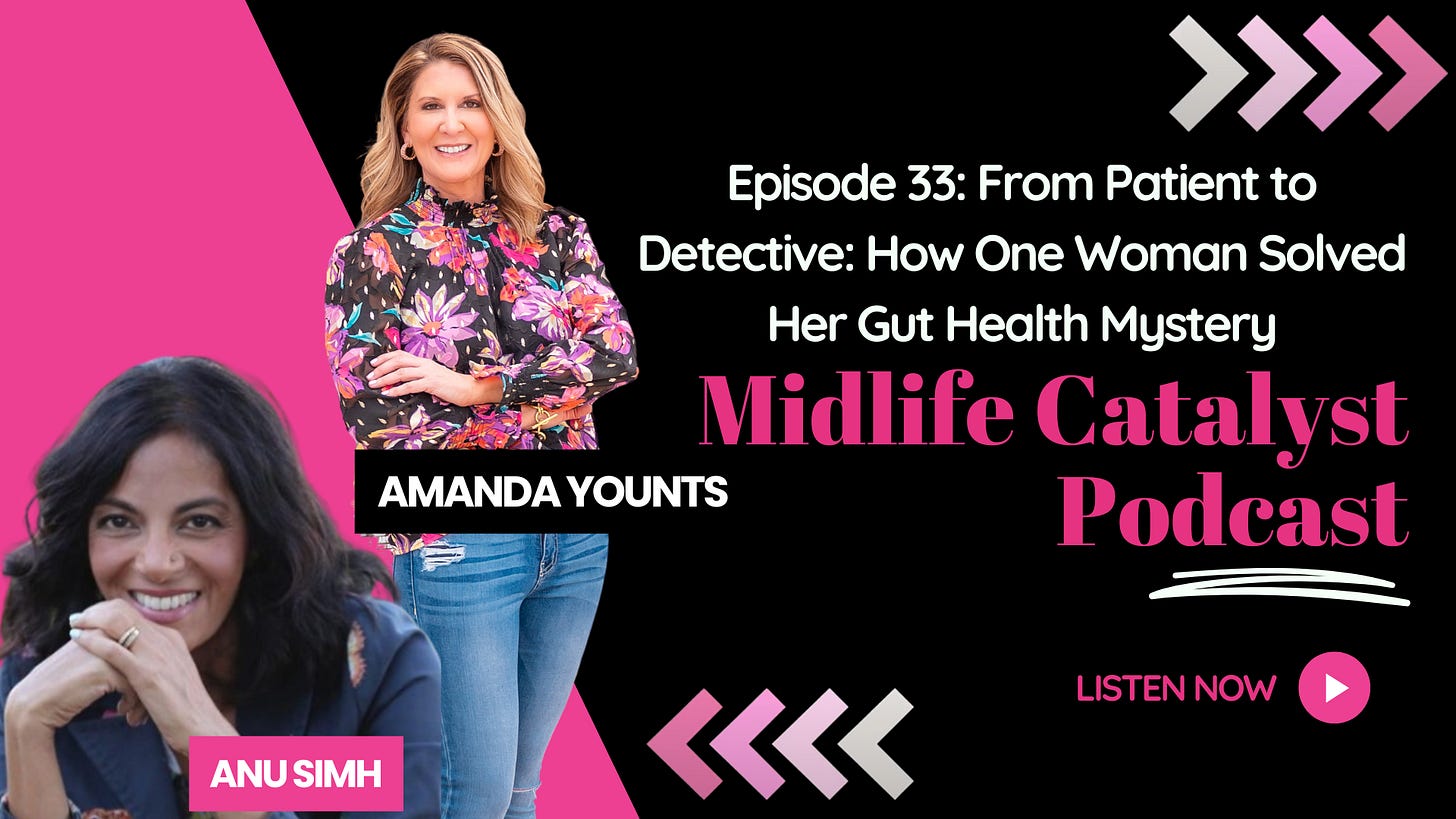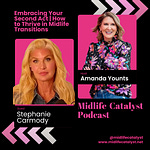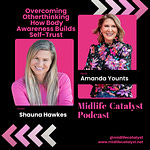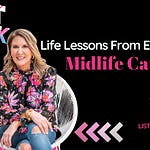Housekeeping:
This is the last guest episode of the Midlife Catalyst podcast for this year. Be sure to follow and subscribe so you know when the show returns for season 2. In the meantime, get caught up on all 33 episodes and let me know your favorite topics and what you would like to hear more of in 2026. Due to the season ending, a very busy work schedule is halting consistent writing, and the current financial state of the country, I am pausing paid subscriptions until the new year. Thank you for your continued support of my work. It’s been an interesting year that has tested me in every way possible!
There’s something profoundly liberating about realizing you don’t have to fight your body anymore. For years, I found myself caught in the exhausting cycle of restriction and rebellion - cutting calories, eliminating entire food groups, then inevitably swinging back to old patterns with a vengeance. Sound familiar?
Recently, I had an enlightening conversation with Anu Simh, a functional health coach who completely shifted my perspective on sustainable wellness. Her approach isn’t about deprivation or quick fixes. Instead, it’s about partnership - specifically, partnering with the trillions of microscopic allies living inside us.
The Foundation Layer
Start with fruits and vegetables - the basics that provide essential fiber and nutrients.
The Enhancement Layer
When you’re ready, add healthy fats, nuts, seeds, and fermented foods that support the foundational work.
The Functional Layer
Once the first two layers feel natural and habitual, incorporate specific compounds like beta-glucans and polyphenols for targeted benefits.
This isn’t about perfection or dramatic overhauls. It’s about gradual, sustainable changes that honor both your lifestyle and your biology.
The Midlife Reality Check
For those of us navigating midlife and menopause, this conversation felt particularly relevant. The strategies that worked in our 40s often stop working as our bodies change. Our microbiome actually shifts during menopause, and the bacterial communities responsible for metabolizing estrogen need extra support.
This is why the “rules of the game” feel different now. We’re literally in new bodies with different needs. Rather than fighting this reality, we can work with it.
The key insight? Protein is getting well-deserved attention for supporting muscle mass and metabolism during this life stage, but without adequate fiber to support it, protein can actually create digestive distress and inflammation.
The solution isn’t less protein - it’s anchoring that protein with plenty of plant-based fiber to keep our internal ecosystem happy and balanced.
Beyond Food: The Nine Arms of Wellness
While nutrition forms the foundation, Anu’s approach recognizes that sustainable health extends far beyond what’s on our plate. Her “Nine Arms of Wellness” framework includes:
Nutrition (of course)
Hydration
Movement
Sleep
Stress management
Community connections
Self-care
Environmental awareness (both internal trauma and external toxins)
Mindfulness practices
This holistic view acknowledges what many of us have experienced: you can eat perfectly and still feel unwell if you’re chronically stressed, isolated, or not getting quality sleep.
The Hope Factor: It’s Never Too Late
One question that came up in our conversation really struck me: Is there ever a point when you’ve done so much damage that there’s no hope for restoration?
Anu’s answer was unequivocally hopeful. While rebuilding a depleted microbiome might take more patience and consistency, the capacity for healing remains. Our bodies want to heal, and our microbes want to thrive. We just need to create the conditions that allow this natural process to unfold.
Starting Small, Thinking Big
Rather than overwhelming yourself with a complete lifestyle overhaul, consider this gentle approach:
Protect your environment. Remove the most tempting processed foods from your immediate surroundings. You can’t rely on willpower when you’re tired and stressed at 11 PM.
Add before you subtract. Instead of focusing on restrictions, look for opportunities to add more plants to meals you already enjoy.
Experiment with variety. Try different types of the same vegetable - Chinese broccoli instead of regular broccoli.
Links to Podcast:
Be sure to hit the follow and subscribe buttons so you don’t miss Season 2! Also, continue to subscribe to my YouTube channel for ongoing clips and shorts.
Where to Find Us:
Visit Anu’s Website for more information and to find her book.
Want to be a guest on the Midlife Catalyst Podcast?
I would love to hear your story. Whether you’re navigating a personal transformation, seeking deeper self-awareness, or just want to share your insights, reach out! Visit the Midlife Catalyst Website or email info@midlifecatalyst.net.













